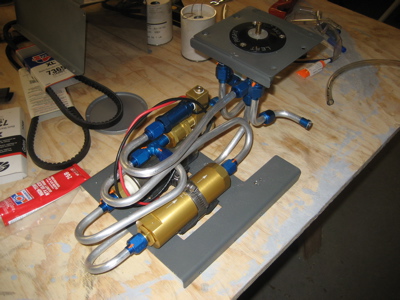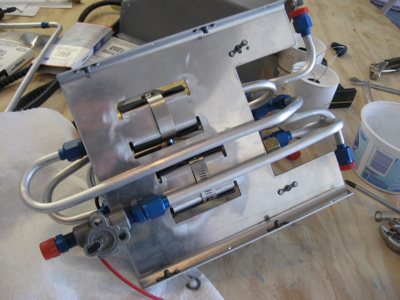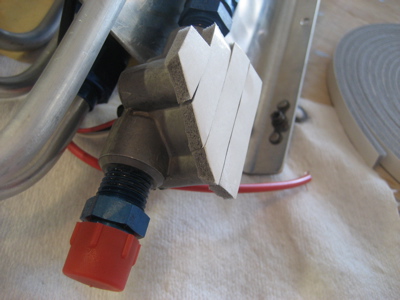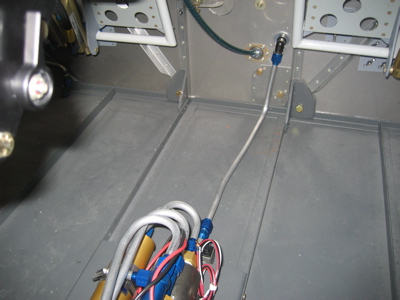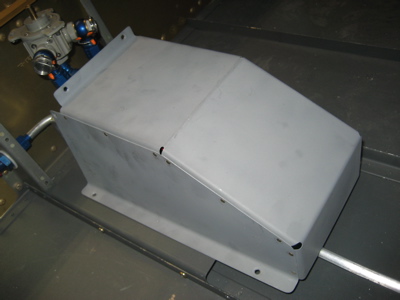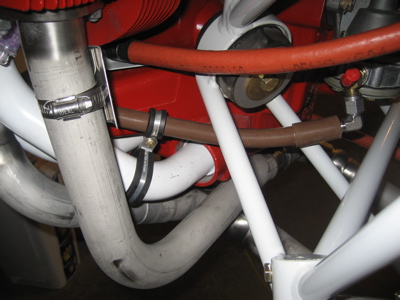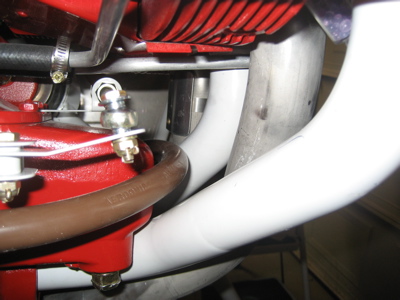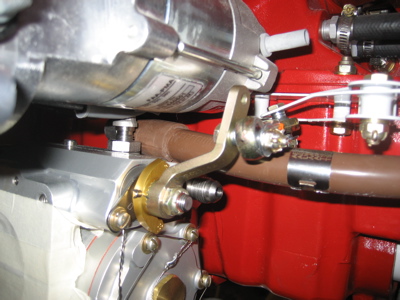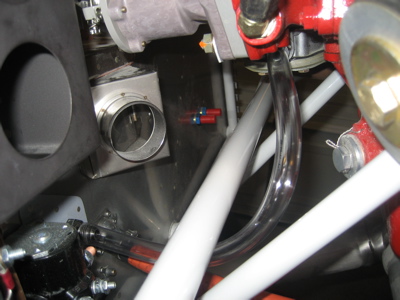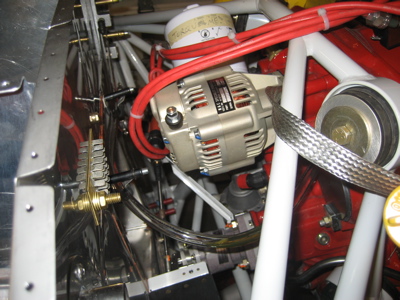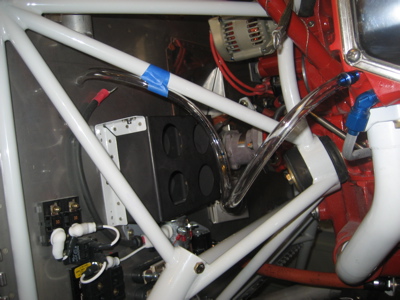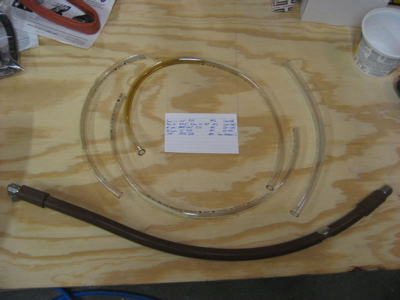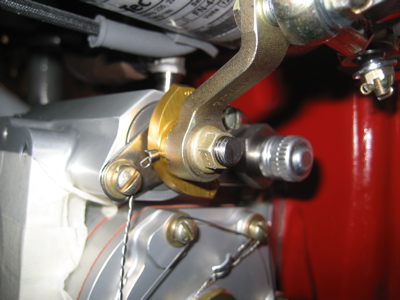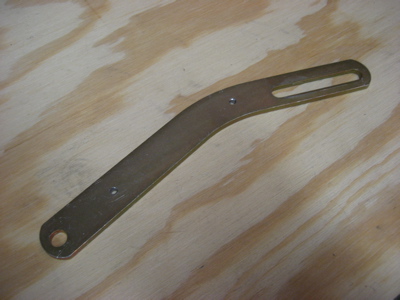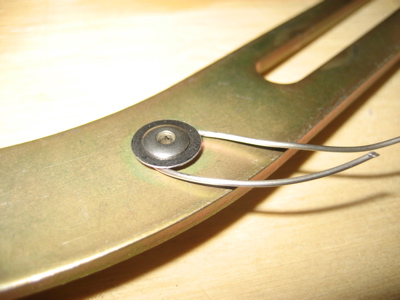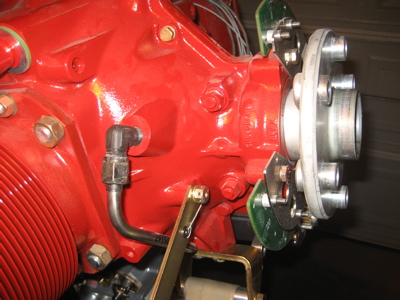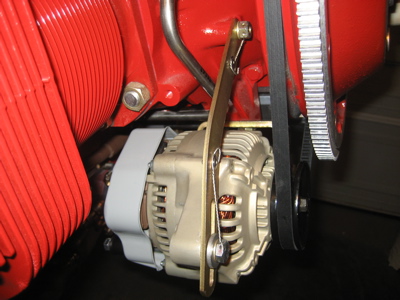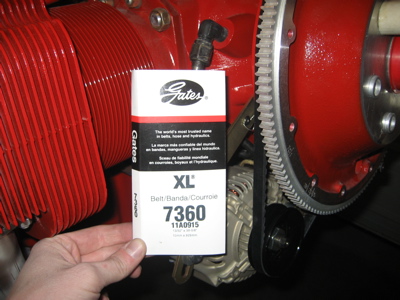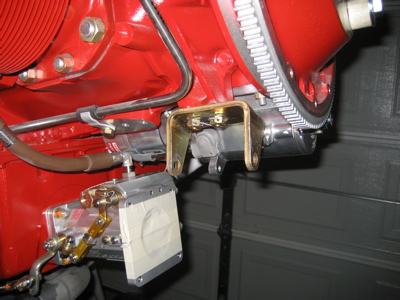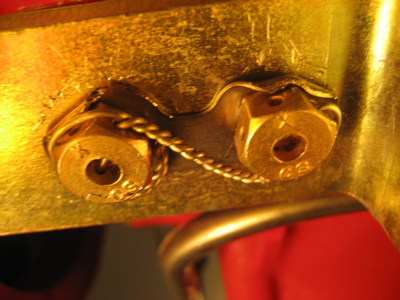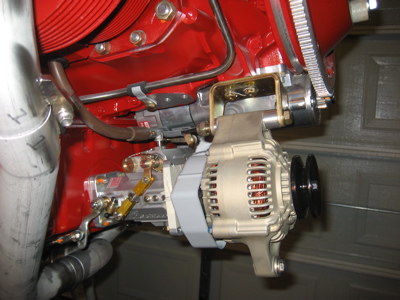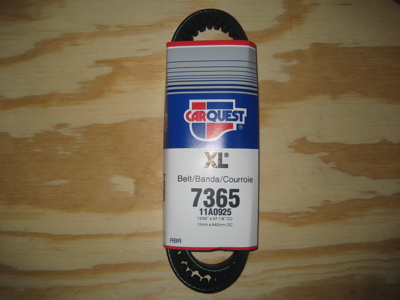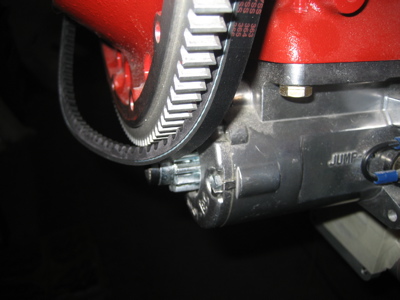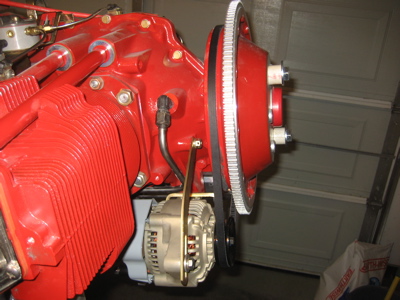Believe it or not, it took me an entire afternoon to install the hose that goes between the engine-driven fuel pump on the back of the engine and the fuel injection servo up front. This seemingly simple task was greatly complicated by clearance problems and lack of space to work in (is this starting to sound familiar?). You want the fuel line to be far away from the hot exhaust pipes, but the ideal routing – up over the "wing" of the oil sump – is blocked by the mixture bellcrank. So, I had to play with various routings of the hose until I could find a way to get it as far away from the exhaust as I could, while still staying clear of the mixture linkage when it's in the idle cutoff (worst case) position.
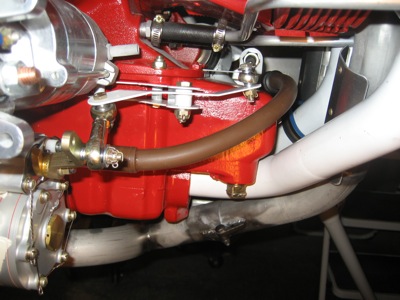
Since the hose is right there, I put some additional heat shields on the exhaust pipes to keep the fuel line cool. In this photo you can see the somewhat circuitous routing the hose takes, as it exits the fuel pump, crosses under an engine mount tube (the photo doesn't show it, but there's an inch of clearance there) and then climbs up away from the exhaust pipes. A pair of back-to-back adel clamps, shown here partially obscured by the exhaust, secures the hose to the #4 intake tube. I ended up with at least an inch of clearance between the heat shields and the hose. By the way, all my fuel/oil hoses are Stratoflex 124J assemblies with integrated firesleeve, made to my specifications by Precision Hose in Tulsa. Good customer service and good prices too.
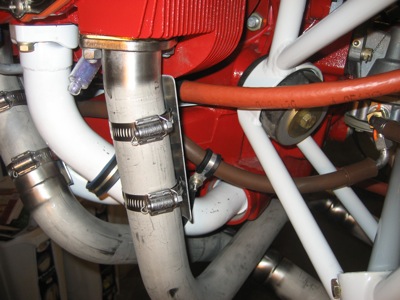
These clamps were a giant pain to install, because the normal bolt-flinging properties of the adel clamps were magnified by the almost complete lack of access to the area where I wanted to put them. I managed to scrape a bunch of paint off the #2 and #4 intake tubes, but it's all cosmetic stuff.
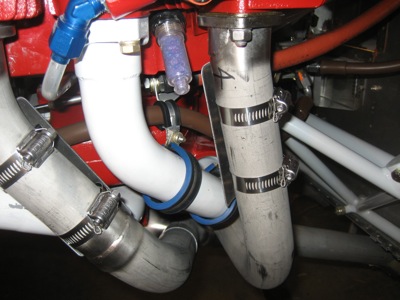
I need to do better than one hose per day if I'm ever going to finish this thing.
